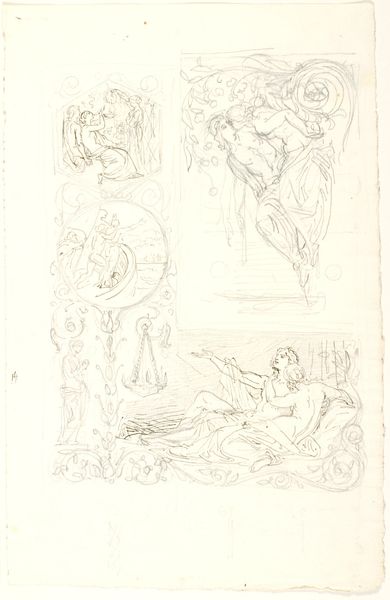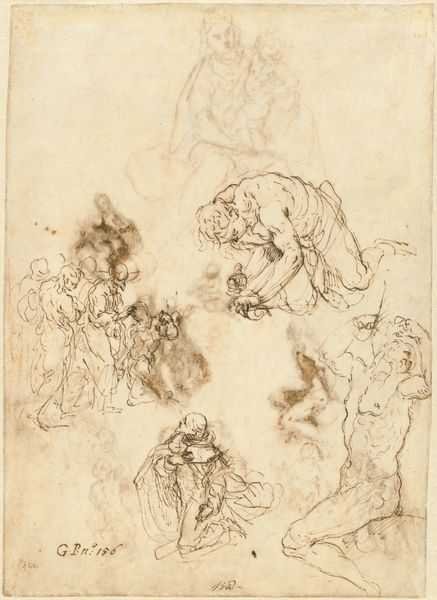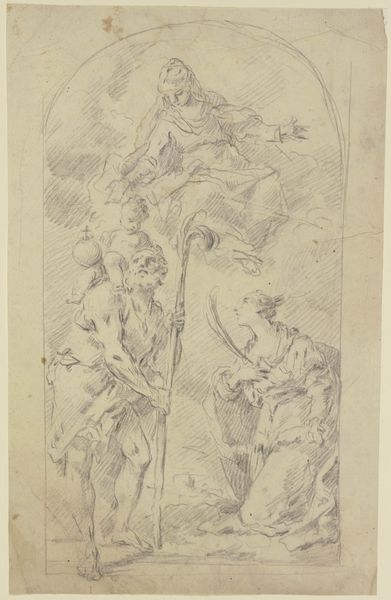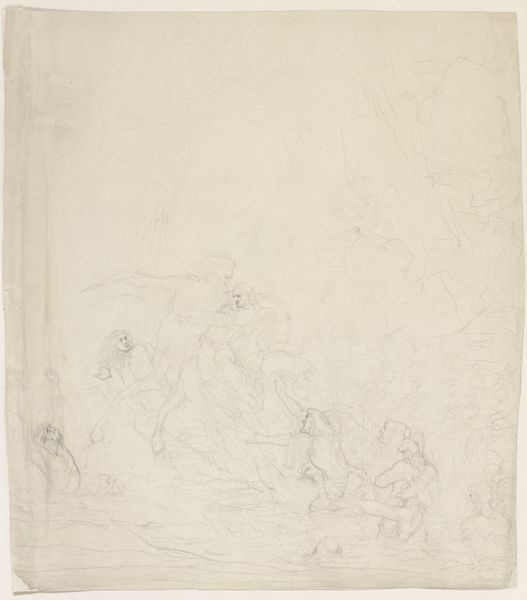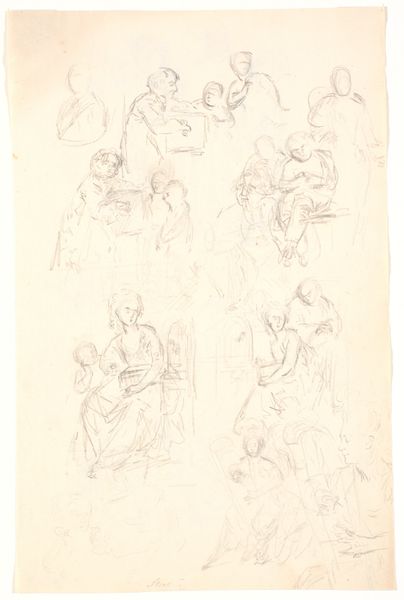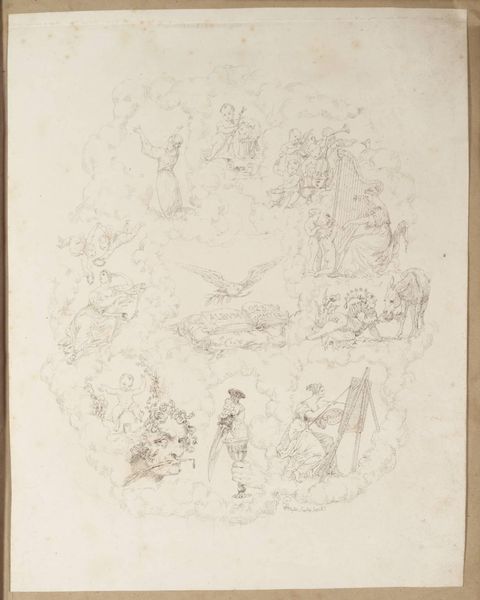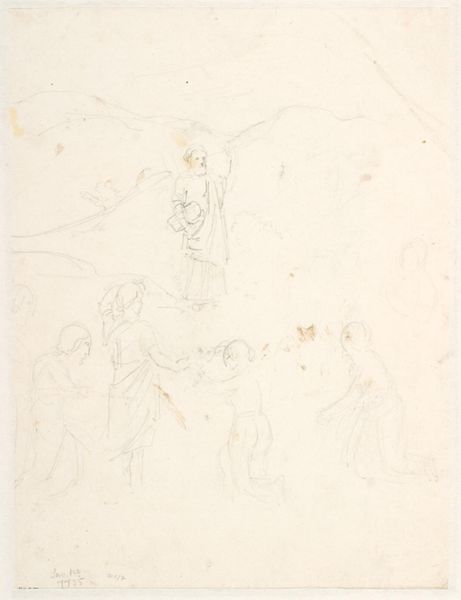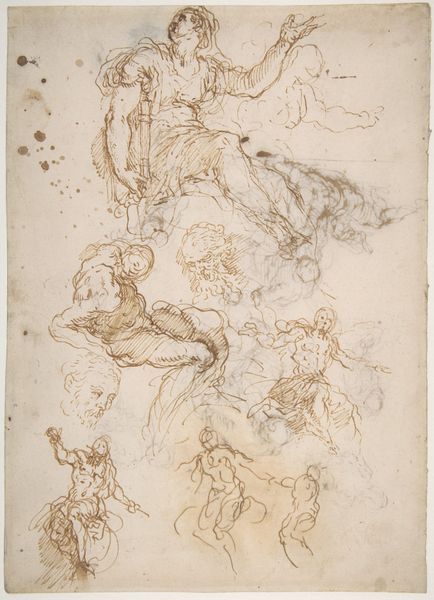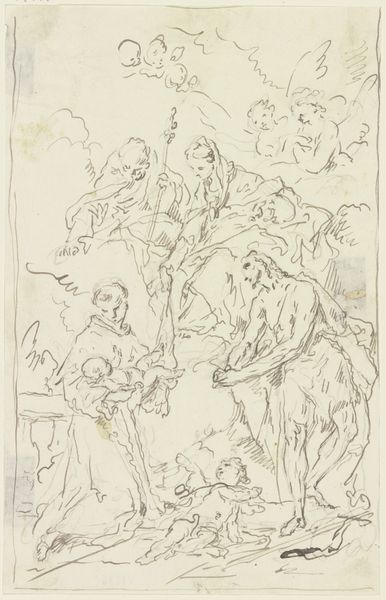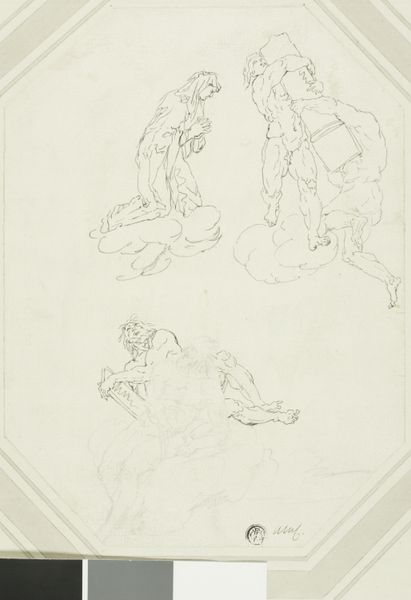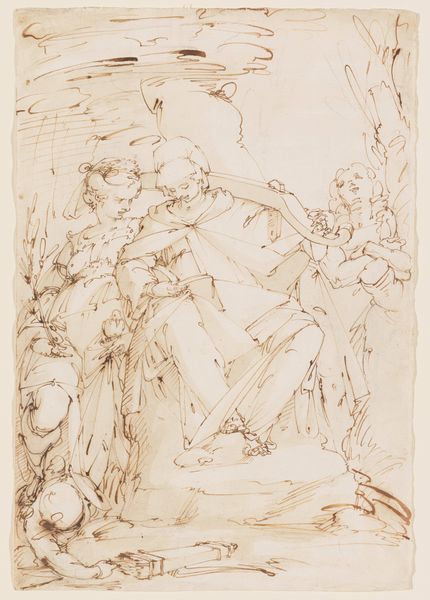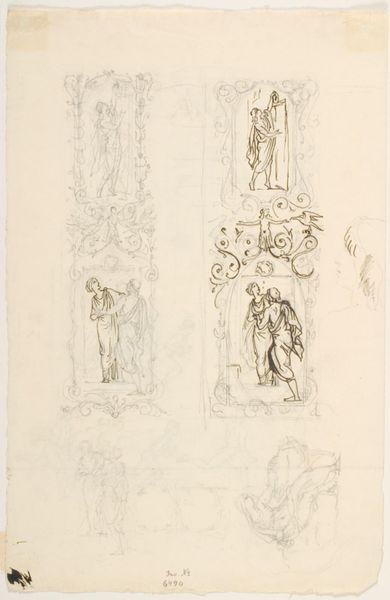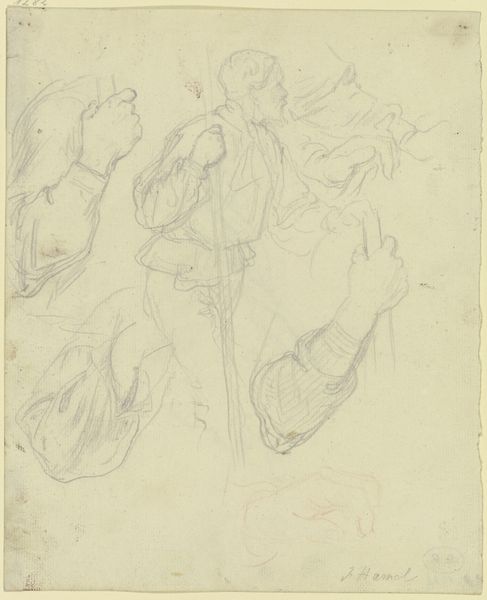
drawing, ink, pen
#
drawing
#
ink drawing
#
pen sketch
#
etching
#
figuration
#
ink
#
pen
#
history-painting
#
academic-art
Dimensions: 364 mm (height) x 236 mm (width) (bladmaal)
Curator: Here we have a pen and ink drawing from 1860 by Lorenz Frølich, titled "Skitser. F.o.: Kvinde i dør. F.n.: Løbende mænd," which translates to "Sketches. Top: Woman in Doorway. Bottom: Running Men." Editor: Right. At first glance, it feels...fragile. Almost ghostly. Like a memory sketched quickly before it faded away entirely. There's a nervous energy in those running figures, but also something dreamlike about their insubstantial quality. Curator: Absolutely. And note Frølich’s technique. He uses very fine lines to delineate the figures and forms. Considering the socio-political climate in Denmark at the time, and his association with academic art, it seems to be studies for history paintings reflecting narratives about Danish and Norse mythology, folklore, and societal values, or even the social body. The use of pen and ink as a relatively accessible and reproducible medium also suggests a democratization of art. Editor: The figures are caught in perpetual motion, but towards what? It almost feels like a study of anxiety—the weight of history, the pressure to perform... the vulnerability of the naked form as well as the soul... It reminds me of those old athletic exercises and training from Greek civilization in antiquity and the Renaissance. Curator: Precisely! We need to also remember Frølich's role in illustrating books and his focus on conveying educational information about the golden age of Norse sagas. These forms allowed mass accessibility through various printed forms of media. Editor: You know, for a work depicting running, it feels surprisingly still, too. Like the frantic energy has been pinned down and analyzed, classified, or pinned as specimen in the butterfly collection. The way the scenes are layered almost evokes a comic strip, doesn’t it? Each frame a moment in an unspoken, chaotic story, like frozen tableaus, for example, running and jumping. Curator: Indeed, a sequential narrative hinting to Frølich’s larger artistic practice involving storytelling on paper. Also notice his precise attention to human anatomy, even in these initial drawings, which showcases the standards of the time. The pen allows detailed expression as we examine Frølichs commitment to classical themes using modern materials. Editor: Seeing the labor that has gone into crafting those materials as well as forms shifts how I view the images... from history sketches to studies of collective motion in space, and a certain type of madness and fragility... or vulnerability if you like! It becomes this whole new lens through which to process history— Curator: I think understanding the artistic creation as it has occurred in material terms allows for understanding a deeper meaning of Frølichs practice. It helps me view history through process! Editor: Definitely gave me some food for thought—thank you.
Comments
No comments
Be the first to comment and join the conversation on the ultimate creative platform.
